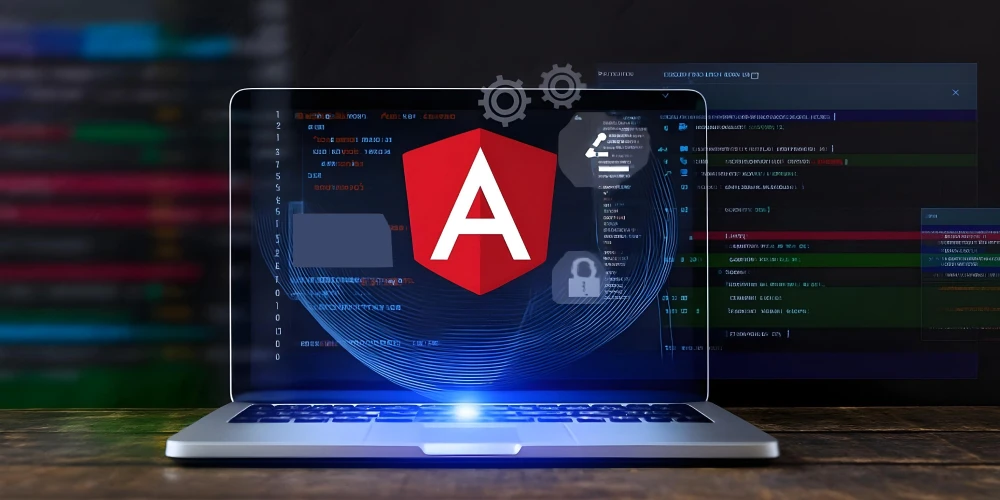While building Angular applications as the app scales, performance becomes important. For ensuring a smooth user experience Angular performance optimization is crucial no matter whether you are dealing with long load times, poor responsiveness, or sluggish rendering. This blog tells you about all the top techniques of Angular performance optimization, their detailed explanation, and practical coding examples that you can easily follow.
Why Angular Performance Optimization is Important?
Angular is a dynamic framework for frontend development, making the whole web development process fast and easier, and more structured. However, certain Angular features like dependency injection, reactive forms, and two-way data binding come at a cost. If they are not used properly it may lead to performance degradation.
Performance issues become more evident with the growing complexity and size of web applications. It not only impacts user experience but also increase bounce rate, lower user retention, and affect mobile performance. Fixing all such issues ensures improved performance and better user experience.
How to Do Angular Performance Optimization?
Here we have collected some top techniques for you to adopt for your Angular performance optimization:

1. Adopt OnPush Change Detection Strategy
A built-in change detection mechanism is used by Angular. It takes care of and checks every component in the component tree to detect change whenever any event occurs. This practice can be highly inefficient. Here comes the ChangeDetectionStrategy.OnPush of Angular that directs Angular to check only those components when their input reference changes:
import { Component , Input , ChangeDetectionStrategy } from ‘ @ angular / core ’ ;
@ Component ({
selector : ‘ app – user – card ’ ,
template : ‘ {{ user . name }} ’ ,
ChangeDetection : ChangeDetectionStrategy . OnPush
})
export class UserCardComponent {
@ Input ( ) user : { name : string };
}
You can also pair this change detection strategy with fixed objects or observables. By using BehaviorSubject and async pipe, you can keep your components performant and more reactive.
// In service
user$ = new BehaviorSubject < User > ( null );
// In component template
< div * ngIf = “ user$ | async as user ” >
{{ user . name }}
< / div >
Are you facing Angular performance issues?
2. Lazy Loading Techniques
With lazy loading, Angular loads feature modules when they are needed. This results in increasing the bundle size, which speeds up the first paint, which is meaningful:
const routes : Routes = [
{
path : ‘ products ’ ,
loadChildren : ( ) = > import ( ‘ . / products/ products . module' . then ( m => m. ProductsModule )
}
];
RouterModule . forRoot ( routes , {
PreloadingStrategy : PreloadAllModules
})
You can use resolvers and guards to load only necessary or authorized modules. Moreover, hiring remote programmers may assist you in these technicalities.
3. Opt for TrackBy in *ngFor
Angular platform re-renders all elements on changes, while rendering lists utilizing *ngFor. You can instruct Angular to identify required items and avoid unnecessary re-renders by using trackBy:
< li * ngFor = “ let item of items ; trackBy : trackById ” >
{{ item . name }}
< / li >
trackById ( index : number , item : any ) : number {
return item . id;
}
This way, you can dramatically improve Angular performance in lists, especially with the latest data updates.
4. Escape Memory Leaks with takeUntil
In case of a lingering subscription, memory leaks can damage your Angular app performance. With the help of the takeUnit operator, it becomes easy to ensure a clean subscription. See the given command:
import { Subject } from ‘ rxjs ’ ;
import { takeUntil } from ‘ rxjs / operators ’ ;
@ Component ({ ... })
export class DashboardComponent implements OnInit , OnDestroy {
private destroy$ = new Subject < void > ( );
ngOnInit ( ) {
this . service . GetData ( )
.pipe ( takeUntil ( this . destroy$ ))
.subscribe ( data => this . data = data );
}
NgOnDestroy ( ) {
this . destroy$ . next ( );
this . destroy$ . Complete ( );
}
}
Moreover, you can easily avoid repetitive boilerplate by picking up alternatives from community libraries that are well aware of the lifecycle. You can also hire dedicated Angular developers to assist in Angular optimization.
5. Utilize Pure Pipes instead of Methods
Another method of Angular performance is to avoid running methods inside Angular templates, they get activated in every change detection cycle:
Bad Code:
< span > {{ calculateTotal ( cartItems ) }} < / span >
Good Code:
@ Pipe ({ name : ‘ totalPrice ’ , pure : true })
export class TotalPricePipe implements PipeTransform {
transform ( items : any [ ] ) : number {
return items . reduce (( sum , item ) => sum + item . price , 0 );
}
}
< span > {{ cartItems | totalPrice }} < /span >
By choosing pure pipes that are possible to be cached and recalculated only when there is any change in input occurs, you can optimize Angular performance.
6. For Heavy Computation, Use Web Workers
In Angular frameworks, heavy computation can block UI rendering. With web workers, you can enable multi-threading as given here:
const worker = new Worker ( new URL ( ‘ . / math . worker’ , import . meta . url ));
worker . postMessage ({ input : largeDataSet });
worker . onmessage = ({ data }) => this . result = data;
This can be used for image processing, data transformation, and algorithm-heavy operations.
7. Tree Shaking for Bundle Size Optimization
Angular CLI enables tree shaking by default, which removes unused code during the production build:
ng build -- configuration production
For Angular optimization, you can:
- Utilize ES module imports:
import debounce from ‘ lodash/ debounce ’ ;
- Eliminate unused services and code
- Escape wildcard imports
For analyzing bundles use this command:
ng build – stats - json webpack – bundle - analyzer dist/ stats . json
8. Enabling Ahead-of-Time Compilation
With Ahead-of-time compilation, TypeScript and HTML are compiled into efficient JavaScript while building applications:
ng build - aot
AOT offers multiple advantages, including fewer runtime errors, faster rendering, increased security, and smaller bundle size. Moreover, a software development company can ensure that all your components utilize static HTML.
9. Use Built-in Preload Strategies
Another proven optimization technique is to leverage built-in preload strategies. You can also use the community libraries of Angular.
Here’s how to reduce perceived latency:
RouterModule . forRoot ( routes, {
PreloadingStrategy : PreloadAllModules
})
Smarter preloading can be done this way:
npm install ngx - quicklink
RouterModule . forRoot ( routes , {
PreloadingStrategy : QuicklinkStrategy
})
10. Avoiding Two-Way Binding
You can avoid two-way binding if unnecessary, instead go for one-way binding with event emitters:
< input [ value ] = “ username ” ( input ) = “ username = $event . target . value” >
Some Additional Angular Optimization Tips
- Debouncing Inputs: Even if you compare Angular vs AngularJS, you should avoid rapid-fire updates and debounce inputs for better performance:
searchControl . valueChanges . pipe ( debounceTime ( 300 )) . Subscribe ( ... );
- Running Operations Outside Angular:
this . ngZone . RunOutsideAngular (( ) = >{
setTimeout (( ) = > this . ngZone . run (( ) => this . updateUI ( )) , 1000 );
});
- Cache HTTP Calls: You can prevent redundant requests this way:
this . cached$ = this . http . get ( url ) . pipe ( shareReplay ( 1 ));
Conclusion
Angular performance optimization involves a series of best practices and well-written code. Each optimization technique plays its part in efficient, fast, and effective application development. Be it optimizing change detection, using Web Workers, reducing bundle size, or avoiding memory leaks, all of them have got you covered for better Angular performance.
Are you ready to scale up your Angular app performance?
Frequently Asked Questions
What are the best ways to optimize Angular app performance?
For better Angular app performance, you can use the OnPush change detection strategy, lazy loading modules, and for faster rendering enabling AOT compilation. Also, you can optimize bundle size by tree shaking and unsubscribing from observables.
How can change detection impact Angular performance?
On every update, the entire component tree is checked by Angular’s change detection, and this may slow down the app performance. With OnPush, you can limit checking when input changes. This way, it improves performance greatly.






